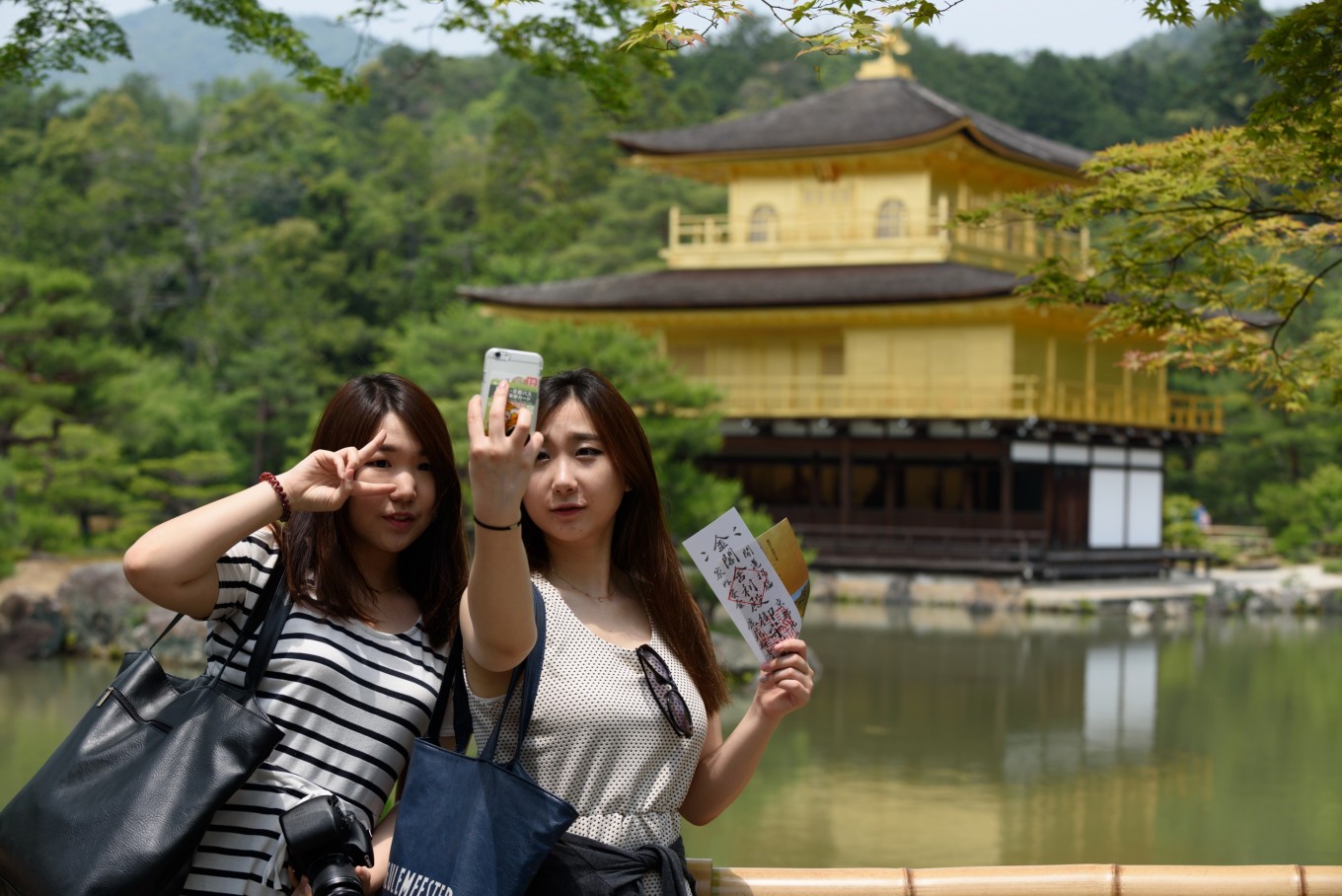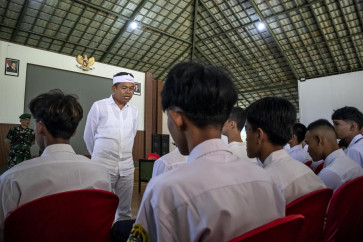Popular Reads
Top Results
Can't find what you're looking for?
View all search resultsPopular Reads
Top Results
Can't find what you're looking for?
View all search resultsKyoto aiming to disperse crowds amid fears of 'overtourism'
Change text size
Gift Premium Articles
to Anyone
 Tourists pose for a selfie in front of the Kinkakuji temple in Kyoto. (Bloomberg/Akio Kon)
Tourists pose for a selfie in front of the Kinkakuji temple in Kyoto. (Bloomberg/Akio Kon)
T
he Japanese city of Kyoto, one of the most popular tourist destinations in the world, is aiming to attract travelers to lesser-known spots to ease "overtourism" that has increased complaints among visitors and local people.
Having been rated highly in foreign travel magazine polls, the number of visitors to Kyoto has topped the 50 million mark for five consecutive years since 2013.
Foreign tourists flock to famous destinations such as the districts of Arashiyama and Gion, and Kiyomizu temple.
But a city survey in 2017 found that 46 percent of domestic travelers had negative experiences during their stay, with congestion cited as the biggest reason.
During the sightseeing season, people sometimes find it difficult to get on overcrowded buses and congestion in many parts of the city has started affecting the lives of local residents.
Among the popular sights is Fushimi Inari Taisha located in southern Kyoto. The Shinto shrine known for its around 10,000 vermillion torii gateways is almost always crowded with travelers hoping to shoot scenic photos.
In the Fushimi district, where the shrine is located, tourists can also find a host of sake breweries in an old area preserving a historic townscape from the end of the Edo period (1603-1868), though it is less known.
The site is near Fushimi Momoyama Station, five stops in the direction of Osaka from Fushimi Inari Station, the nearest station to the shrine, on the Keihan main line. The Fushimi district boasts natural springs and more than 20 breweries are concentrated there.
Read also: Kyoto introduces lodging tax on tourists
Visitors can listen to master sake brewers explain the history and the manufacturing process of sake at events held at dining bar Fushimi Sakagura Koji, which regularly keeps more than 100 kinds of sake brewed in the district.
Takahiko Hayashi, a manager of the company running the dining bar, said, "We want to boost the profile of (the area) as a town of sake so that visitors to the shrine can come a little further to our place too."
Meanwhile, the Ohara district in northern Kyoto known for Jakkoin and Sanzenin temples, is struggling to revitalize the area once ranked the city's top destination in a survey in the 1970s.
Since the mid-1990s, the district has failed to attract strong demand as less people have used their own cars to visit the area. From Kyoto Station, only two or three buses an hour are available.
Although acknowledging the challenges, a city official said the district has big potential and that "we can improve the accessibility by combining the rail system and hope to draw more tourists again by finding creative ways to attract them."





